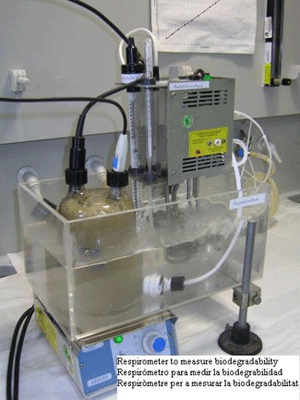New treatments for industrial wastewater

The increasing complexity of wastewater streams as well as the unfavourable public opinion about some conventional waste management techniques, e.g. incineration, is forcing the development of cost-competitive and environmentally acceptable wastewater treatments. There is little doubt that biological processes will continue to be employed as a baseline treatment processes for most wastewater. However, when biological processes are applied to treatment of industrial effluents, they do not always give satisfactory results, sine many organic substances produced by the chemical and related industries are inhibitory, toxic and/or resistant to biological oxidation.
Several technologies have shown their potential for treating industrial effluents. Nearly all of them are based on the oxidation of the organic pollutants, which are converted into carbon dioxide and water (complete mineralisation) or into harmless intermediate products, more suitable for a biological treatment. In this sense, Catalytic Wet Air Oxidation (CWAO) has become an attractive technique to efficiently treat organic wastewater that is either too concentrated or too toxic to be biologically restored.
Hence, the main goal of this study, developed in two parts, was to demonstrate the technical feasibility of coupling an initial CWAO step with a municipal wastewater treatment plant (WWTP) to deal with phenolic industrial wastewater.
To this end, in the first part of this work several CWAO tests were completed (140ºC-160ºC in CWAO and 2-9 bar of oxygen partial pressure- PO2-) for several model compounds typically appearing in industrial wastewater such as phenol, o-cresol and 2-chlorophenol. The initial concentrations were higher than 8000 mg l-1 in chemical oxygen demand (COD). The catalyst used was a commercial activated carbon, due to its properties as adsorbant and catalyst for a wide variety of pollutants. The biodegradability enhancement was measured using respirometric techniques.
The best CWAO condition for the pre-treatment of phenol, o-cresol and 2-chlorophenol was 160ºC and 2 bar of PO2. At this condition, the COD removal and the total organic carbon (TOC) abatement were the highest ones for phenol and 2-chlorophenol and just the second one for o-cresol. In addition, the catalyst preservation was clearly better at 2 bar than at 9 bar of PO2. Finally, the obtained biodegradability enhancement was the maximum for phenol and almost the highest one for o-cresol and 2-chlorophenol.
The obtained results show a promising way to develop new industrial wastewater treatments based on the coupling of chemical oxidation pre-treatment followed by a classical biological oxidation. In this way, several oxidation plants can be designed to specifically treat wastewater from an industrial sector, which later on can be integrated and managed into the public sewage systems using the extensive network of municipal WWTP.
In a next article the results of the second part of the work will be presented, that deal with the integration between the CWAO effluents and a biological plant at pilot scale.
References
Suarez-Ojeda, ME; Fabregat, A; Stuber, F; Fortuny, A; Carrera, J; Font, J . "Catalytic wet air oxidation of substituted phenols: Temperature and pressure effect on the pollutant removal, the catalyst preservation and the biodegradability enhancement". CHEMICAL ENGINEERING JOURNAL, 132 (1-3): 105-115 AUG 1 2007.


